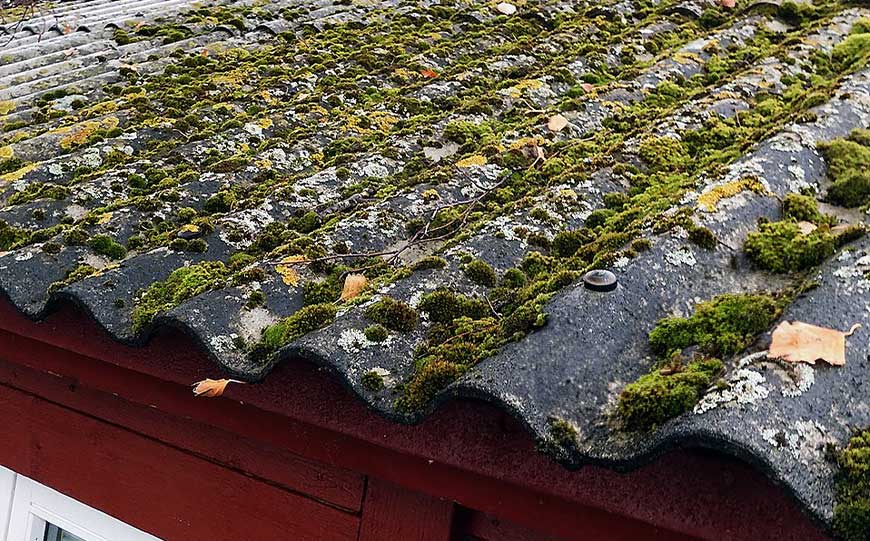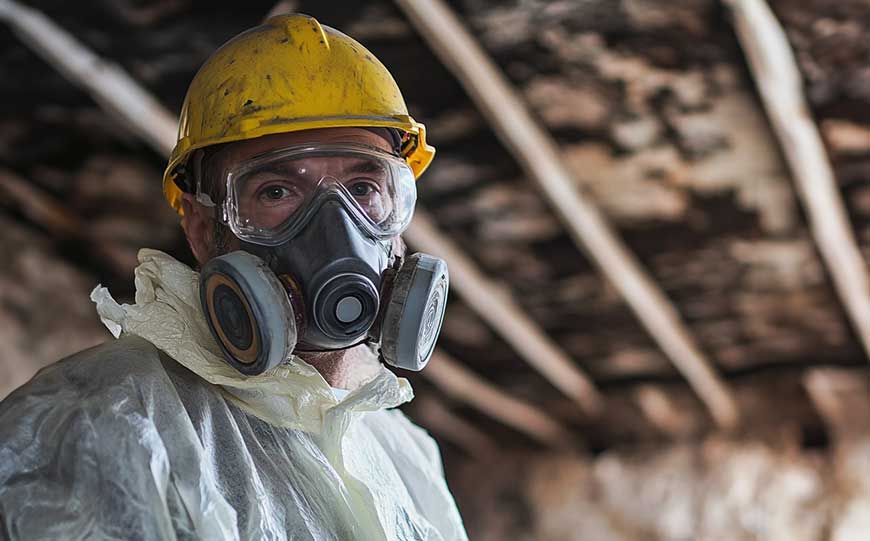
Asbestos is a harmful mineral that was commonly used in building materials until the late 20th century.
Due to its strength and resistance to heat, asbestos was widely applied in construction, including many school buildings.
However, asbestos fibres can cause serious health issues if they become airborne and are inhaled.
Today, managing asbestos in schools is essential to protect the health of students, teachers, and staff.
This article will explain the dangers of asbestos, where it might be found in schools, what actions to take if it’s discovered, and what responsibilities schools have in managing asbestos risks.
Table of Contents
Why is Asbestos in Schools Dangerous?

Asbestos becomes dangerous when its fibres are disturbed and released into the air.
When inhaled, these fibres can settle in the lungs, causing health problems over time.
Exposure to asbestos has been linked to severe respiratory illnesses, including asbestosis, lung cancer, and mesothelioma.
Because these diseases may develop years or even decades after exposure, the risks are often long-term and serious.
In schools, the danger of asbestos is particularly concerning because children are more vulnerable.
They have more years ahead of them, which increases their risk of developing asbestos-related illnesses later in life.
Since schools often have ageing infrastructure, asbestos management is a crucial part of ensuring a safe learning environment.
Where Could Asbestos be Found in Schools?
Asbestos can be present in many parts of older school buildings.
Some common places where asbestos may be found include:
Insulation and Pipes
In many older schools, asbestos was commonly used as insulation around pipes, boilers, and heating ducts.
This material is especially risky if it becomes worn or damaged, as it can release asbestos fibres into the air.
Heating systems with asbestos insulation can be a significant hazard if disturbed during maintenance or repairs.
Ceiling and Floor Tiles
Asbestos was often mixed into ceiling and floor tiles to increase durability and fire resistance.
Many classrooms, hallways, and gymnasiums in older school buildings may still have these tiles.
If they are cracked, broken, or sanded down during maintenance, asbestos fibres can be released, posing a health risk.
Roofing Materials

Roofing materials, including roofing felt, shingles and sidings on older school buildings, sometimes contain asbestos.
Exposure risk is usually lower for exterior materials, but deterioration over time or maintenance work, such as roof repairs, can lead to asbestos exposure.
Fireproofing and Wall Materials
Asbestos was commonly added to wallboards, joint compounds, and fire-resistant building materials.
Fire doors, asbestos cement sheets, and sprayed-on coatings may contain asbestos.
When walls are drilled into or fireproofing materials are disturbed, fibres can become airborne.
Laboratories and Art Rooms
Some equipment and materials in school laboratories and art rooms may contain asbestos.
Older lab benches, fume hoods, and certain heat-resistant materials used in science labs could have asbestos components.
Careful inspection and management are needed to ensure these materials remain undisturbed.
What Should be Done if Asbestos is Found in Schools?
If asbestos is found in a school, immediate action should be taken to assess the risk.
Here’s what should be done:
Immediate Assessment
If asbestos is found in a school, an immediate assessment should be conducted by a qualified asbestos surveyor.
Only professionals certified by the Health and Safety Executive (HSE) should perform this inspection to ensure safe and accurate results.
The assessment will determine the type of asbestos, location, and condition of the asbestos-containing material (ACM) to understand the level of risk it poses.
If the material is undamaged and not at risk of disturbance, it may be safe to leave it undisturbed under regular monitoring.
Creating an Asbestos Management Plan
Once asbestos is confirmed, the school must develop an asbestos management plan as required by UK regulations, specifically the Control of Asbestos Regulations 2012.
This plan outlines where asbestos is located, the condition of each ACM, and the necessary actions to manage it safely.
The plan must be easily accessible to all school staff and contractors who may need to work near or around these areas.
It should include regular inspection schedules and a plan of action if the asbestos is disturbed or damaged.
Repair or Encapsulation
If the asbestos material is in a deteriorated condition or at risk of being disturbed, encapsulation or repair may be needed.
Encapsulation involves sealing the ACM with a protective layer to prevent fibres from becoming airborne.
This method is less invasive than removal and can often be completed quickly.
In certain cases, repairing damaged areas may be enough to maintain safety.
Again, only licensed asbestos professionals should perform these tasks to ensure compliance with safety standards.
Asbestos Removal

In some instances, asbestos removal may be the safest course of action, particularly if the ACM is severely damaged or located in high-traffic areas.
Asbestos removal is a complex and costly process that requires specialised equipment and strict adherence to HSE guidelines.
Schools must hire licensed asbestos removal contractors, such as KD Asbestos, for this work, and it is usually scheduled outside of term time to avoid exposure to students and staff.
Informing the School Community
It is crucial to inform parents, staff, and local authorities about the presence of asbestos and the school’s management plan.
Transparent communication helps build trust and ensures that everyone understands the precautions being taken to protect health and safety.
Updates should be provided as necessary, especially if removal or encapsulation work is undertaken.
Monitoring and Record-Keeping
Ongoing monitoring and record-keeping are essential to ensure that asbestos in schools remains safely managed.
Regular inspections should be conducted, and any changes in the condition of ACMs must be documented.
This record-keeping supports long-term compliance with HSE requirements and contributes to a safer environment for students, staff, and visitors.
What is the School’s Legal Responsibility if Asbestos is Found in Schools?

In the UK, schools have a legal responsibility to manage asbestos in compliance with the Control of Asbestos Regulations 2012.
These regulations require schools to assess, manage, and minimise asbestos risks to protect students, staff, and visitors.
Duty to Manage
Under these regulations, school management has a ‘duty to manage’ asbestos if it owns or occupies buildings likely to contain asbestos.
This means they must identify and assess the presence of ACMs and evaluate any risks of exposure.
Schools must arrange for a professional asbestos survey to identify ACMs accurately.
Asbestos Management Plan
If asbestos is found, schools are required to develop a comprehensive asbestos management plan.
This plan should outline where asbestos is located, its condition, and details of monitoring and inspection schedules.
The plan should be accessible to all relevant staff and contractors to ensure safe handling and prevent disturbance of ACMs.
Routine Monitoring and Compliance
Schools must ensure regular monitoring of ACMs and update their asbestos management plan as needed.
Any repairs, maintenance, or removal involving asbestos must be carried out by licensed professionals.
Additionally, schools have a responsibility to inform parents, staff, and contractors about asbestos risks and precautions taken.
These measures help ensure compliance and protect everyone within the school environment.
What to do if You Are Exposed to Asbestos in Schools
If you suspect you’ve had asbestos exposure in a school, there are several important steps to follow to protect your health:
Leave the Area
First, if you encounter damaged materials that might contain asbestos, leave the area immediately.
Avoid touching or disturbing the material further, as this can release more asbestos fibres into the air.
Inform School Authorities
Report the suspected exposure to the school administration or health and safety officer.
They are responsible for managing asbestos risks and will take steps to secure the area and arrange for professional assessment.
Seek Medical Advice
Though brief, low-level exposure to asbestos is unlikely to cause serious health issues, it’s still advisable to consult a healthcare professional.
They can assess your risk and provide guidance on any necessary health monitoring.
Inform your doctor of the potential exposure so they can note it in your medical records.
Monitor Your Health
Asbestos-related diseases often develop over many years, so staying aware of any respiratory symptoms is important.
If you experience prolonged coughing, difficulty breathing, or chest pain in the future, seek medical attention promptly.
Conclusion
You should now have more of an understanding of asbestos in schools and what needs to be done about it.
Managing asbestos in schools is a serious responsibility.
Schools built before asbestos regulations may still contain asbestos materials in areas such as insulation, tiles, and walls.
If asbestos is discovered, schools should take steps to assess, monitor, and manage it carefully.
By following safety regulations, developing an asbestos management plan, and keeping parents, teachers, and staff informed, schools can minimise asbestos risks.
Effective management helps protect the health of everyone in the school community, creating a safer learning environment.
For more information, or for any help with your asbestos needs, get in contact with us here at KD Asbestos.